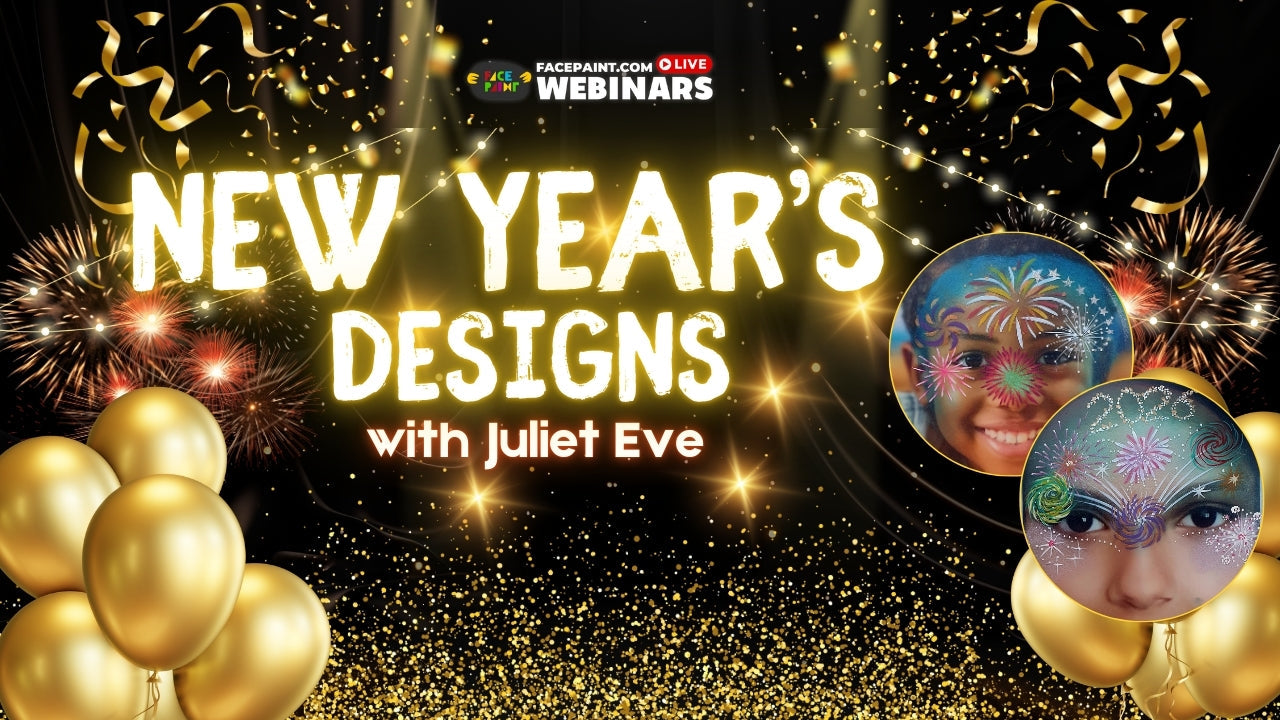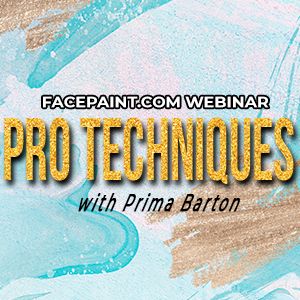In this webinar, learn one stroke roses with Sally-Ann Lynch. For more in-depth information, tips and tricks, watch the full video above!
One Stroke Roses

So what I'm going to do is I'm going to show you how I do my loading first ‘cause I think that's really, really important in my style of roses. So I always use one of these water pots. They're the collapsible ones 'cause they're space savers as well. [I’m dipping in my brush] then I'm going to take off the excess water. I'm gonna bring my towel over just so you can see the end of it. The towel is my bestfriend. So I'm just going to take off the excess paint as if I was an artist using a palette. So how you want to do it--and I think this is really important. It sounds really basic but people have told me it's revolutionized their way of painting and doing roses. Put the very, very tip of the brush in the water as if you're testing a really hot bath with your tippy toes in the water. You just tip it to the side, and even when you do that, that is still quite wet even though you've only tipped the end of the brush in. So you're still going to slightly dab it on the towel, only gently, and then you're going to bring it back into that paint. If it's a bit wet, dab back on your towel until you're happy. Back and forth, back and forth, at least five times, okay? And that's when you're going to start your roses.
Now, I've got lots of different ways but we'll start off with a nice basic shape. So you're going to do one, two, three [humps]. So we're starting off with the one petal. Then I go to the other side, so you're doing 3 again, and then another 3 for the third petal. [Continue this technique until you have 5 petals.]
Right, so we've got the 5 out ones. Now, I haven't reloaded the brush so even though it's short, it holds a lot of paint. Now I'm going to do the inner bud. You have to make sure it's not too wet, and then I'm going to crisp this up again to make the bud sharper. And then you can do another inner one. Then I'm going to go up a little bit and come round and make that inner petal there. Then we're gonna come up the other side.
You wanna have a look at that rose and see that you haven't gone too long [in the lower part]. So that's kind of the completed rose.
One Stroke Leaves

I’m gonna be using Kraze Lush for the leaves. Get a nice load, and the idea of what you want to do is have this leaf coming off the side so almost like a line and then you want to come up there (flick it to the side), and then here, rest it on that petal there so it's close and then come back up the side (connect it to the previous stroke). So the rose still looks like it's popping forward.
People think with one stroke they have to just complete it all in one big fast one stroke. You need to stop and breathe and think about your placement.
Another thing you can do is even easier because it is almost just like a movement, a flick of the brush. You want to get some different contrast in that green. I'm gonna go in the light green and yellow and you can just add little flourishes of a different color. I paint more like an impressionist artist so you're giving the impression that the foliage and the leaves are there when really, it is just a press of a brush of that shape there. So very often when I'm on the job, you don't often kind of do all this (more elaborate) shape because there's no time. By the time you collect it together and you've done your detailing or whatever, it looks like a perfect leaf.
Leaves Muscle Memory Exercise

I'm just going to do some lines in a cross on the board. If you want to do some muscle memory exercises for your leaves, bear in mind you've got to do them at all angles. I'm going to go into the most of the one stroke with this brush. So you're going to do one (hump), two (hump), into a point, three. Then you're gonna come down the point, stop. Don't think you have to do it all in one swoop. So we're coming down--one, two, three.
Don't forget, you can't keep every single leaf in that comfortable position. So you can't keep doing it like this (upright), hence why we've got the cross. You need to also be able to do them underside. You need to go one, two, three into a point. Then you need to come back up the other side--one, two, three.
It's actually a little bit easier on the face or on an arm because it's a three-dimensional thing. This is flat. This is why practicing on whatever, whether it be a board or greaseproof paper or whatever it is you choose to use, will make you a really good one stroke artist. So you're going to do one, two, into that point, and stop, breathe, just let yourself see what you've done, and build up this muscle memory. And this is how you build up on the shape.
These are actually really satisfying exercises and I'm telling you know, during Covid and all the pressures that we are feeling, sitting and doing this relaxes the brain as well as makes you a really good one stroke artist.
Products Mentioned in the Webinar:
Kraze FX Dome Stroke Lush
Kraze FX Dome Stroke Pink Rose
Kraze FX Dome Stroke Bloodberry
Prima Barton Angle 3/4" Brush
Kraze FX Dome Stroke Orchid
If you missed the live webinar, you can watch it now in the video above or later at our YouTube channel. Thank you, Sally, for sharing your talents with us! Thank you to everyone who tuned in to the webinar. Click here to know our upcoming webinars.
 FREE SHIPPING FOR USA ORDERS OVER $100
FREE SHIPPING FOR USA ORDERS OVER $100








Leave a comment (all fields required)